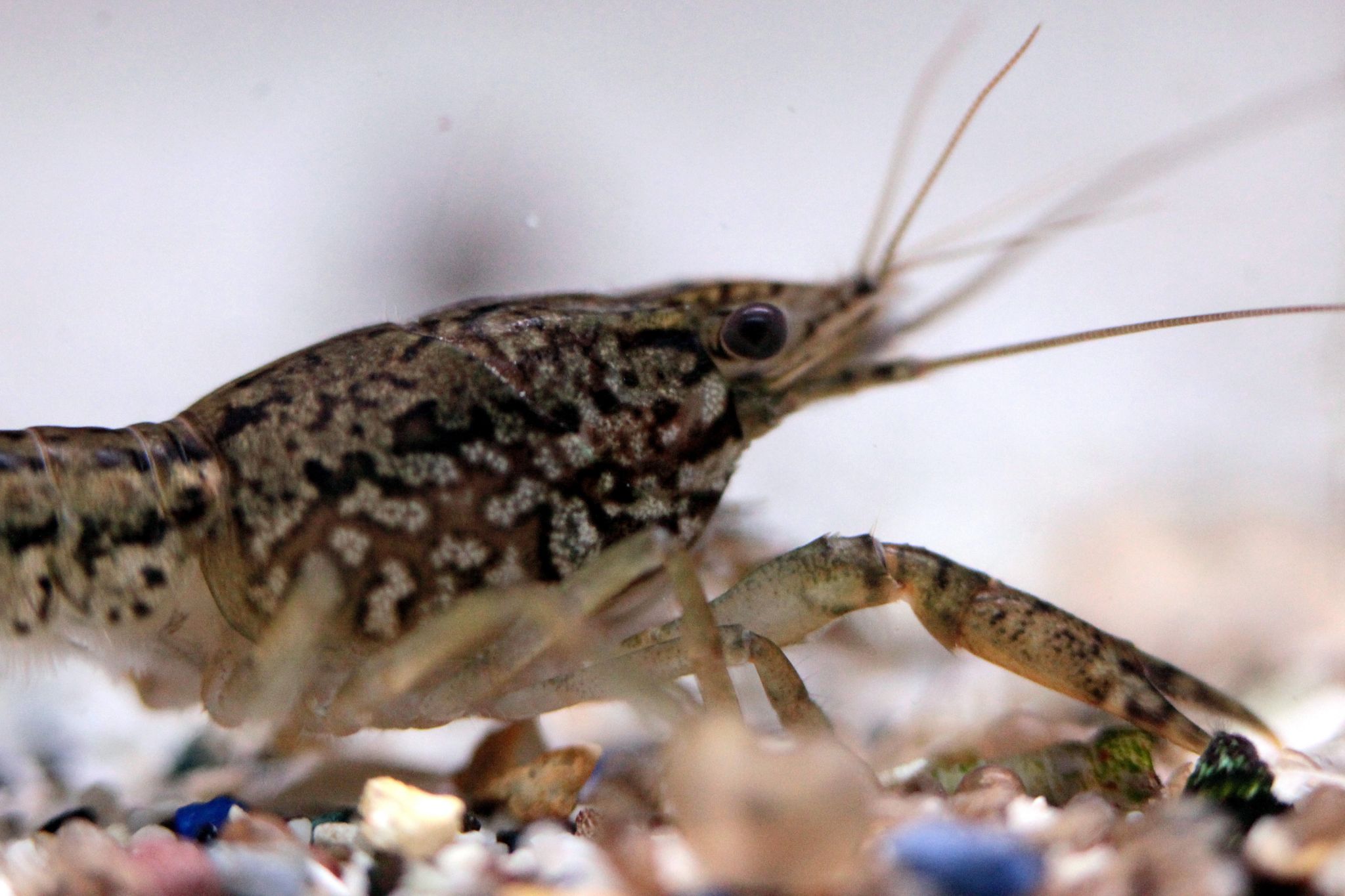New crayfish that doesn't need males to mate becomes all-powerful
- Published

A mutant species of all-female crayfish taking over the world is not the latest science fiction film but a real-life environmental thriller.
A new study has found that marbled crayfish are multiplying rapidly and invading ecosystems across the world.
The ten-legged pests are descended from one single female with a mutation allowing it to reproduce without males.
These self-cloning ladies are found for sale in North America, despite a warning against keeping them as pets.
Sales of the six-inch creature are already banned by the European Union.
Procambarus virginalis did not exist three decades ago.
Born to a male and female slough crayfish, a species originally from Florida, the original marbled crayfish had an additional set of chromosomes - a mutation that made her distinct from her parents and allowed her to reproduce without having to mate.
Now officially a separate species, the marbled crayfish can be found in the wild in Japan, Madagascar, multiple European countries and the US.
The new study published in Nature, Ecology and Evolution describes the invasive species as a threat to wild ones, particularly seven native species in Madagascar.
"If you have one animal, essentially, three months later, you will have 200 or 300," Dr Wolfgang Stein, one of the researchers, told Canadian public broadcaster CBC.
Dr Stein, who is a neurophysiologist at Illinois State University, told the BBC that they compared 11 marbled crayfish, spread through the pet trade to four locations on three continents.
He noted that while they all share the DNA of one mother crayfish, there were some differences in "colouring".
"The animal sequenced here by us in the US was more blue-ish than the ones from Germany and Madagascar," Dr Stein said.
He believes this is where environmental influences may play a role in shaping the unique past of this freshwater crayfish's life. "[Raised] in solitude they have a tendency to be blue", and those socialised with others in their species tended to be more grey, he explained.
You might also like:
Curiously, scientists at the German Cancer Research Centre, that led the study, may be able to better understand how cancer tumours adapt and develop resistance to drug treatments, by studying the crayfish's adaptability and ability to multiply.
The crustaceans can be bought in pet shops in North America and through online adverts. One online seller from Ontario offered a one-inch self-cloning marbled crayfish for free and five larger ones for C$20 ($16; £11.50).
While there is not yet a wild population of marbled crayfish in Canada, the department of fisheries and oceans warned that it would be illegal to release any unwanted crayfish into the wild.
"Based on what is known about the reproductive behaviour of the marbled crayfish, we do not recommend Canadians keep these animals as pets," Becky Cudmore, of the fisheries and oceans department, told CBC.
Mutant crayfish: What's the background?
It all started in an aquarium in a German pet shop in the 1990s. A female slough crayfish was bornwith an additional set of chromosomes - a mutation that allowed her and her offspring to spawn hundreds of eggs at a time without a mate.
The population of this genetically identical crayfish exploded within the pet trade, particularly among German aquarium hobbyists.
But with the species able to reproduce exponentially within a few months, people began releasing unwanted crayfish - also known as marmorkrebs - into ponds and lakes across Europe, creating the thriving wild populations seen today.
The freshwater creatures' ability to self-clone rapidly has led to them being compared with the fictional Tribble alien species from Star Trek, who are also able to multiply.
Introduced as a cheap source of protein in Madagascar, the all-female species is now threatening native ones, creating an ecological nightmare for authorities.
The European Union and two US states have already banned the marbled crayfish from being owned or traded, but populations in the wild continue to spawn.
Crayfish take over Berlin park
- Published14 September 2016
- Published14 September 2017
- Published25 August 2017